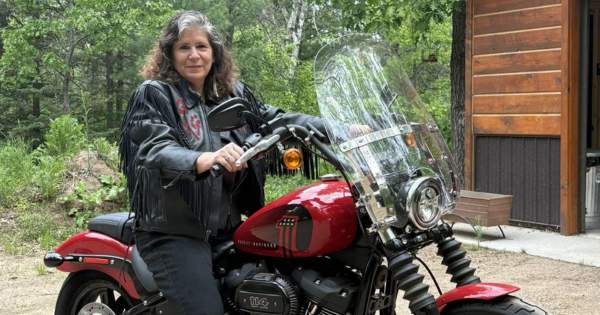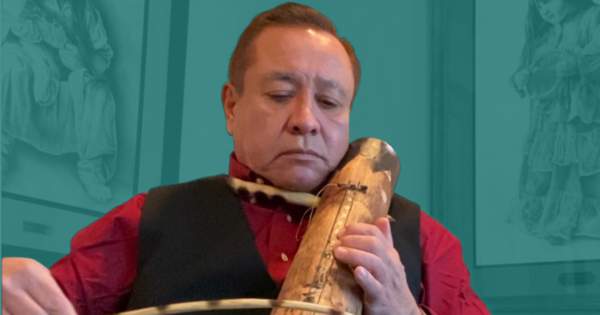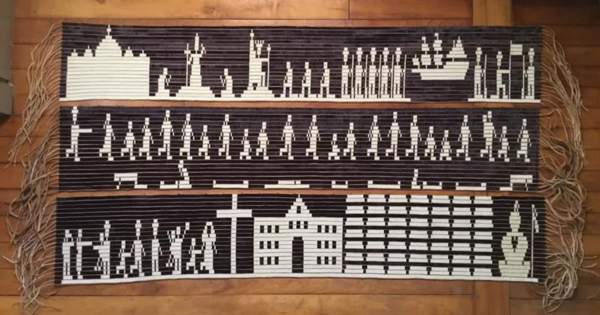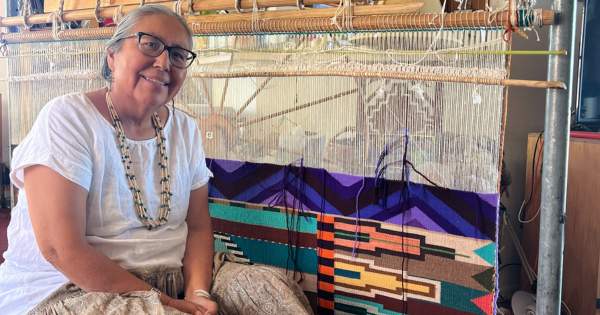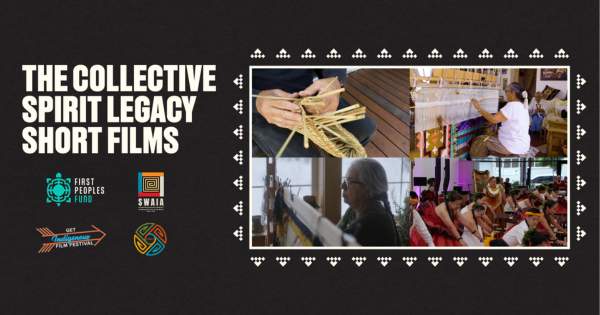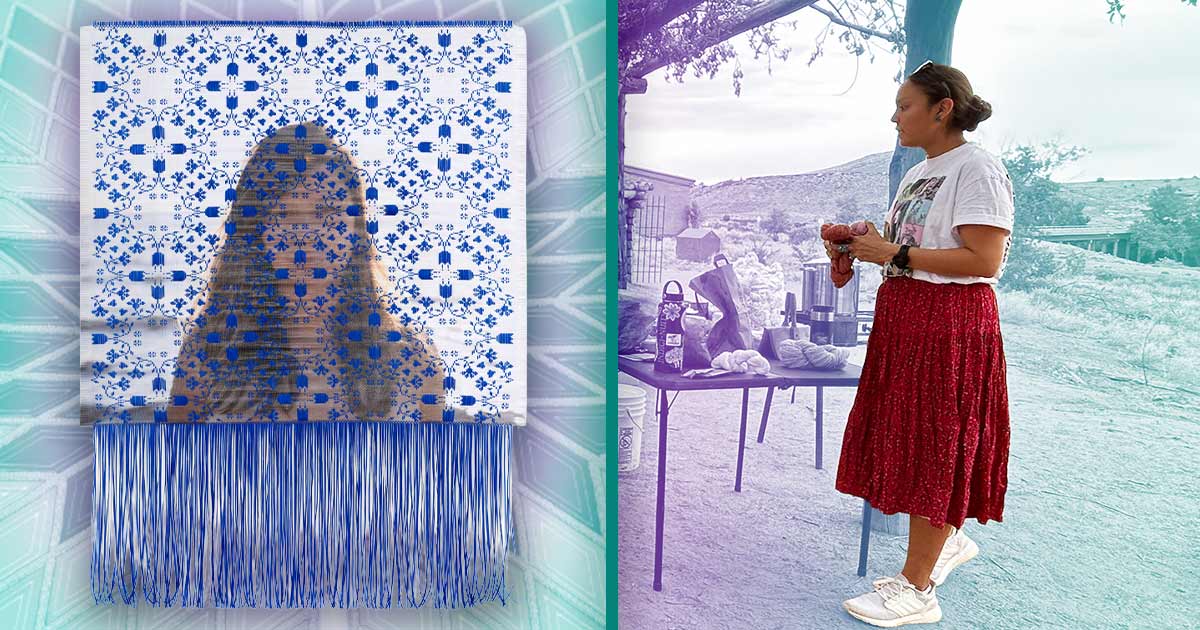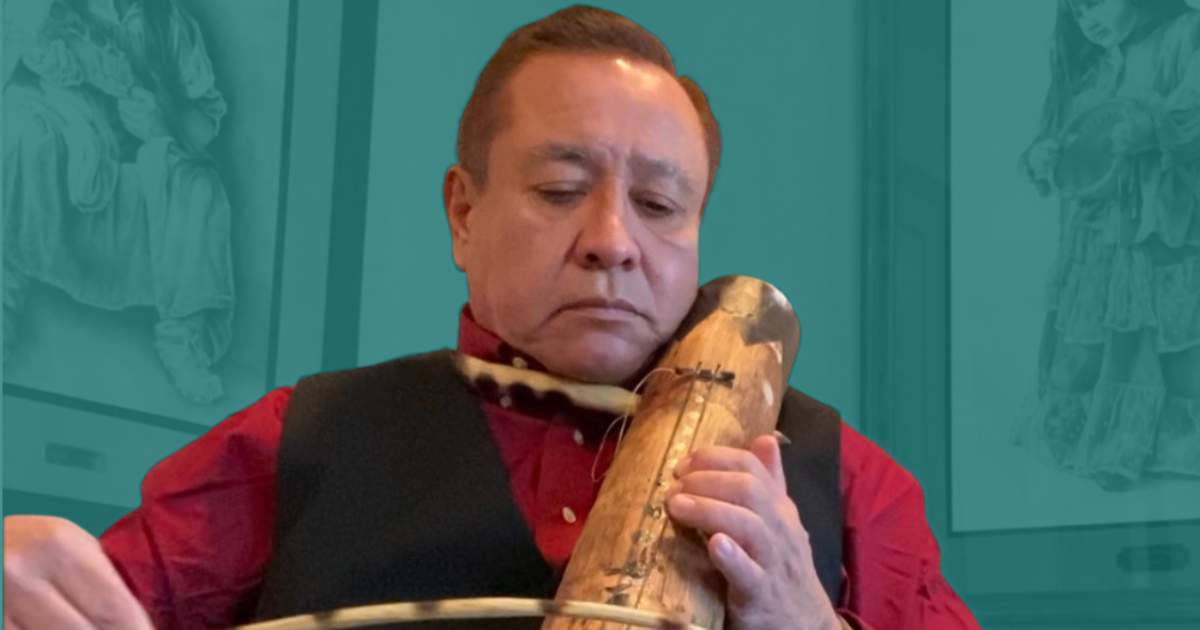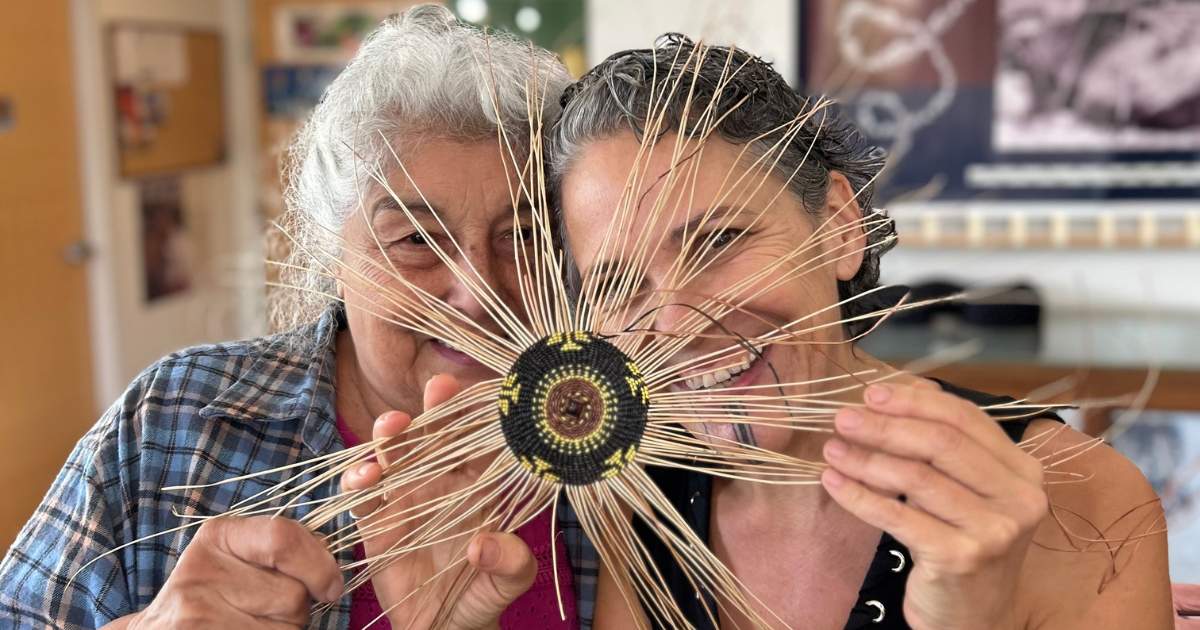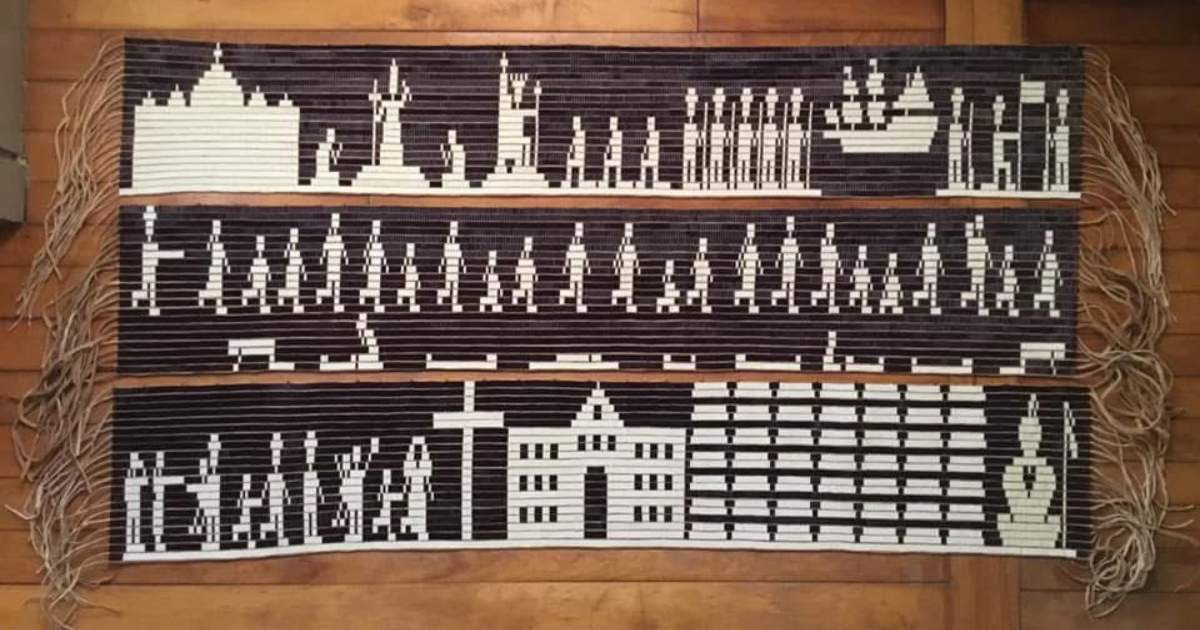
‘We speak the same language’
Great physical distances and vast oceans have proven scant barriers for the deep, productive and lasting collaboration that binds Hawai‘i’s PA’I Foundation and First Peoples Fund (FPF).
“Our principals and our values align in our support for our Native peoples” says PA’I Executive Director Vicky Holt Takamine and 2013 Community Spirit Award honoree. “And that is what’s been so great about the work we’ve been able to do with First Peoples Fund.”
Founded in 2001 with the mission to preserve and perpetuate Native Hawaiian arts and cultural traditions for future generations, the PA’I Foundation found inspiration in First Peoples Fund which, though only five years old when PA’I launched, was already a leader in the field of supporting Native artists and culture bearers.
“We’re pretty isolated,” said Vicky. “We don’t get in the conversation sometimes.” But that isolation diminished when Vicky met First Peoples Fund President Lori Pourier at a Ford Foundation gathering in 2005. That meeting kicked off an abiding working relationship, partnership and personal friendship. FPF helped by opening doors to funders with a genuine spirit of generosity -- “it’s not something they just talk about, they do it,” said Vicky -- and offering programs and training, in particular the Native Artist Professional Development Trainings that introduce business and entrepreneurial skills to Native artists.
“When I first heard about (NAPD training) I thought, ‘We have to have that here,” Vicky said. The trainer’s made the trip to Hawaii and the program became a cornerstone in the PA’I - FPF alliance.
“Our artists really enjoyed the experience,” said Vicky, who soon doubled down and asked FPF to come back and teach Native Hawaiians to lead the artist development trainings. Those trainers are active today: Ka'ohu Seto (2016 Community Spirit Award honoree), Kaloku Holt (2016 Artist in Business Leadership fellow) and Ka’iu Takamori (2017/18 Intercultural Leadership Institute fellow).
“[Our] trainers from Hawai‘i are just excellent,” said Ben Sherman, a former chair of the First Peoples Fund board who conducted the first NAPD sessions in Hawai’i. “They are unique to Hawai’i.” But also fully in harmony with First Peoples Fund’s vision and approach.
The common thread is values. The PA’I Foundation is founded on values that branch off the word Aloha:
Akahai - meaning kindness, to be expressed with tenderness;
Lokahi - meaning unity, to be expressed with harmony;
ʻOluʻolu - meaning agreeable, to be expressed with pleasantness;
Haʻahaʻa - meaning humility, to be expressed with modesty;
Ahonui - meaning patience, to be expressed with perseverance.
For First Peoples Fund, values occupy the core of the organization and also their artist development training.
“It’s the most important part of our training,” said Ben. “We don’t teach (the artists) how to do their art. They have the talent to do that. We ask them about their values, their family values, their tribal values. Only then do we teach them how to be business people and talk about planning, pricing and marketing.”
And that fit right in with the PA’I Foundation, Vicky said. “We speak the same language,” she said.
In 2019, PA’I was named a recipient of a First Peoples Fund Indigenous Arts Ecology Building Grant (now the Native Arts Ecology Building Grant) designed to expand FPF’s work beyond individual artists and culture bearers by helping Native nonprofit organizations support Native artists in their communities.
“With [support through that] program, we could focus on next-level development –– to work with those artists that had come to the first training session, and develop a second, higher level,” Vicky said. Part of that is working on the artist’s portfolios and applications for grants and gallery space. “Their artwork is already stellar, but sometimes we can help with the presentation,” said Vicky, offering an example:
Humility is a core value throughout Indian Country. “We Natives don’t like to brag about ourselves,” she said. “Sometimes we need someone to brag for us.”
Vicky reads through artist presentations and applications and has, on occasion, suggested places where the artist could be more direct in describing his or her accomplishments. “They’ve gone through the (Native Artist Professional Development) trainings. Now let’s fine tune their applications,” said Vicky. With the Indigenous Arts Ecology Building grant PA’I could help the artists up the next rung, all the while continuing to develop the institutional support for a thriving Indigenous art ecology -- and economy.
Just as First Peoples Fund partnered with Minneapolis-based Artspace to build the state of the art Oglala Lakota Artspace on the Pine Ridge Indian Reservation, PA’I is collaborating with Artspace to create a center in downtown Honolulu -- the Ola Ka 'Illima Artspace. The Hawaiian iteration occupies the first floor of an already fully occupied 84-unit affordable housing building and when completed will include a dance studio, gallery space, as well as conference room and office facilities. Plans were that the space would be open by now but the pandemic had a hand in introducing delays. “We hope to begin our tenant improvements this summer and open in 2022,” said Vicky. “I’m looking forward to inviting Lori to the grand opening” to help cut the ribbon on a new venture, something Vicky and Lori have done before.
“We used to find ourselves at the same conferences for leaders of arts organizations,” said Vicky. “And we kept saying to each other, ‘these panelists aren’t speaking to us. Everything is designed for a Western audience. This doesn't apply to us.”
Some of it was nuts and bolts. A speaker might suggest that the arts leader direct his or her marketing department to undertake a project. “We’d look at each other and say, ‘Hey, I am the marketing department,’” said Vicky. Other issues were deeper. “To us, our connection to the land is sometimes more important than the work. The land comes before us. That’s in our organizations.”
They found others agreeing with them and decided to form a new arts leadership organization to address their values, interests and needs. Their conversations led to the launch of the Intercultural Leadership Institute (ILI) with Alternate ROOTS, First Peoples Fund, National Association of Latino Arts and Cultures (NALAC), and the PA'I Foundation. Today ILI takes fellows on a yearlong program that challenges dominant social norms while honoring differences of histories, traditions, and vocabulary. ILI develops leaders specifically within the arts and culture field to adeptly respond to significant changes that impact society, politics, environment and economy. The new organization provides a tangible way to practice intercultural work with partner organizations, build solidarity, capacity and healthy social narratives for organizations of color across the nation.
“We can’t separate our principals and values from the mission,” said Vicky. “They are embedded in our actions.”
Which can sometimes be, well, direct. “My hula (Native Hawaiian dance) is a form of resistance,” said Vicky explaining that western colonizers quashed most forms of Hawaiian culture but let hula continue, thinking it was merely a form of entertainment. Instead it was the lifeblood of the entire culture. Stories and language and values were embedded in the songs and passed down to new generations. “Our culture survived through hula,” said Vicky. It then experienced a renaissance in the 1970s with a revitalization of all aspects of the Native culture. Vicky was part of that as a student in the 70s and the work -- to preserve and perpetuate Native Hawaiian arts and cultural traditions for future generations -- continues to this day.
When Moses Goods (a 2021 FPF Artists in Business Leadership fellow), one of Hawai‘i’s most prominent theater artists, began his career 20 years ago there were few Native Hawaiian’s in his field. “ I had no footsteps to follow in,” he said. But today, things are different. “Even though there is still so much more that needs to be done, there have been huge advancements toward creating a space for Hawaiians in theater,” he said.
And though credit for that is deserved in many quarters, it’s perhaps not unreasonable to think one might also tip one’s hat in the direction of the PA’I Foundation and her big sister, First Peoples Fund.
